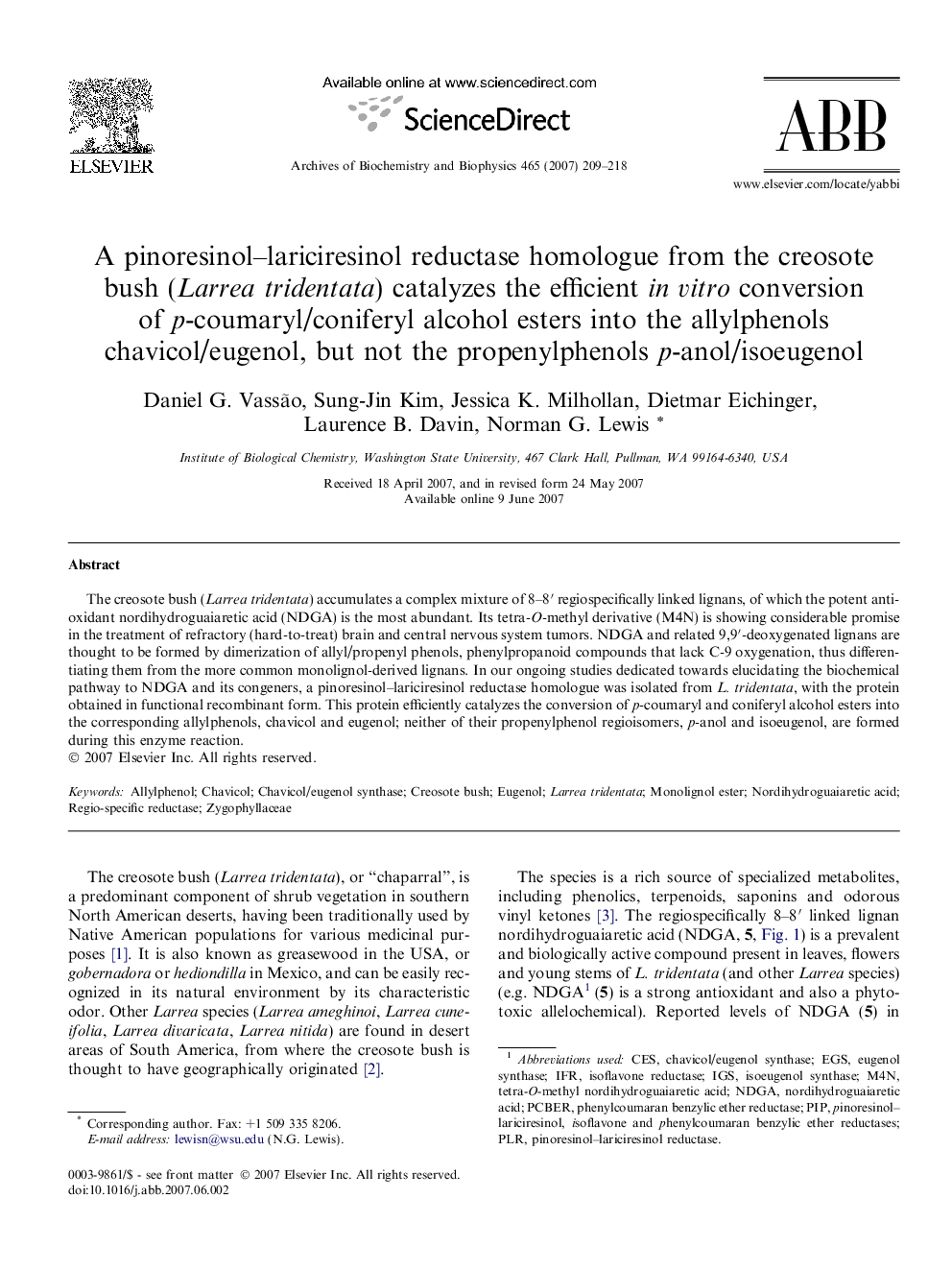| Article ID | Journal | Published Year | Pages | File Type |
|---|---|---|---|---|
| 1927057 | Archives of Biochemistry and Biophysics | 2007 | 10 Pages |
Abstract
The creosote bush (Larrea tridentata) accumulates a complex mixture of 8-8â² regiospecifically linked lignans, of which the potent antioxidant nordihydroguaiaretic acid (NDGA) is the most abundant. Its tetra-O-methyl derivative (M4N) is showing considerable promise in the treatment of refractory (hard-to-treat) brain and central nervous system tumors. NDGA and related 9,9â²-deoxygenated lignans are thought to be formed by dimerization of allyl/propenyl phenols, phenylpropanoid compounds that lack C-9 oxygenation, thus differentiating them from the more common monolignol-derived lignans. In our ongoing studies dedicated towards elucidating the biochemical pathway to NDGA and its congeners, a pinoresinol-lariciresinol reductase homologue was isolated from L. tridentata, with the protein obtained in functional recombinant form. This protein efficiently catalyzes the conversion of p-coumaryl and coniferyl alcohol esters into the corresponding allylphenols, chavicol and eugenol; neither of their propenylphenol regioisomers, p-anol and isoeugenol, are formed during this enzyme reaction.
Related Topics
Life Sciences
Biochemistry, Genetics and Molecular Biology
Biochemistry
Authors
Daniel G. Vassão, Sung-Jin Kim, Jessica K. Milhollan, Dietmar Eichinger, Laurence B. Davin, Norman G. Lewis,
